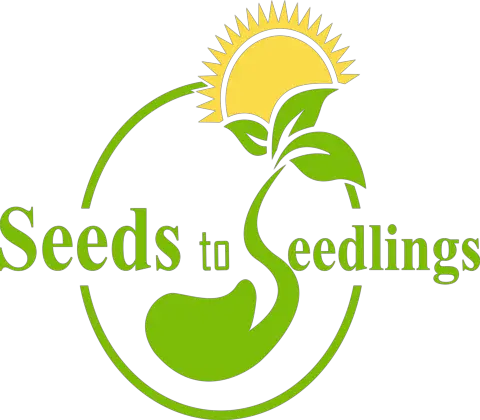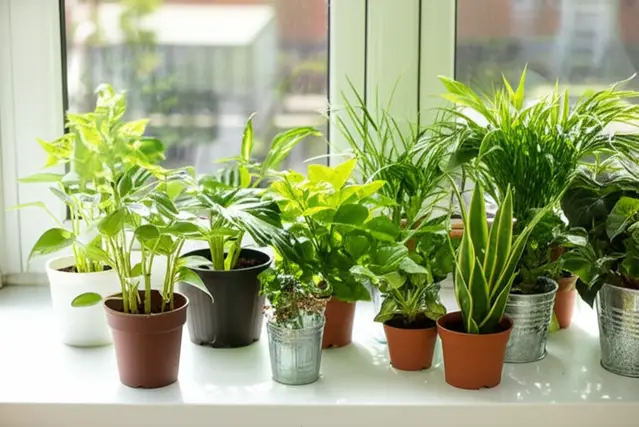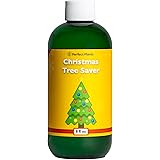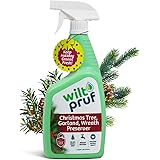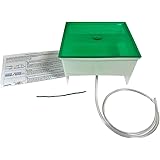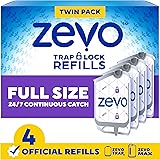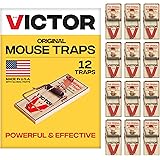Welcome, plant parents! In 2025, nurturing our indoor greenery is more than just a hobby; it’s a lifestyle. Our houseplants bring life, color, and tranquility to our homes, purifying the air and boosting our well-being. But just like any living thing, they need the right nutrients to thrive. That’s where fertilization comes in.
This comprehensive guide will take you from A to Z on fertilizing your green indoor plants, providing you with the most up-to-date information, trends, and techniques to ensure your leafy companions flourish. Whether you’re a seasoned plant enthusiast or just starting your indoor jungle, get ready to level up your plant care game!
Why Fertilizing Indoor Plants is Crucial
Indoor plants rely entirely on us to provide them with the essential nutrients they need. Unlike their outdoor counterparts, they don’t have access to naturally replenishing soil. Over time, the nutrients in their potting mix become depleted as the plants absorb them for growth and development. Fertilizing replenishes these vital nutrients, ensuring healthy growth, vibrant foliage, and even flowering (for those that bloom indoors!).
The Depletion Problem
Think of your plant’s pot as a pantry. You stock it with all the necessary ingredients (nutrients) when you first pot the plant. As the plant ‘cooks’ (grows), it uses up those ingredients. Without restocking (fertilizing), the pantry eventually runs bare, leading to deficiency symptoms and stunted growth.
Key Nutrients: The NPK Trio and Beyond
The primary nutrients your plants need are nitrogen (N), phosphorus (P), and potassium (K), often referred to as the “NPK” trio. These macronutrients play crucial roles:
- Nitrogen (N): Promotes leafy growth, vibrant green color, and overall plant vigor.
- Phosphorus (P): Supports root development, flowering, and fruit production.
- Potassium (K): Enhances overall plant health, disease resistance, and water regulation.
In addition to NPK, your plants also need micronutrients, such as iron (Fe), manganese (Mn), zinc (Zn), copper (Cu), boron (B), and molybdenum (Mo), albeit in smaller quantities. These micronutrients are essential for various enzymatic processes and overall plant health. A deficiency in even one micronutrient can lead to noticeable problems.

indoor plant fertilizer
Understanding Fertilizer Types: Choosing the Right One
The world of fertilizers can seem overwhelming at first, but understanding the different types available will empower you to choose the best option for your plants and your preferences. We’ll break down the key categories:
Organic vs. Synthetic Fertilizers
This is perhaps the most fundamental distinction. Let’s delve into the pros and cons of each:
Organic Fertilizers
Organic fertilizers are derived from natural sources, such as plant or animal waste. They release nutrients slowly over time, improving soil structure and promoting beneficial microbial activity. Examples include:
- Compost Tea: A liquid solution made by steeping compost in water. Rich in nutrients and beneficial microbes.
- Worm Castings: The “poop” of earthworms, incredibly rich in nutrients and beneficial microorganisms. A fantastic soil amendment.
- Fish Emulsion: A liquid fertilizer made from fish byproducts. Provides a good source of nitrogen. Be aware of the strong smell!
- Bone Meal: Ground animal bones, rich in phosphorus. Excellent for promoting root development.
- Blood Meal: Dried blood, high in nitrogen. Use cautiously, as it can burn plants if overapplied.
- Seaweed Extract: Derived from seaweed, containing various nutrients, trace minerals, and growth hormones.
Pros of Organic Fertilizers:
- Slow-Release: Nutrients are released gradually, reducing the risk of over-fertilization and nutrient burn.
- Soil Improvement: Improve soil structure, water retention, and drainage.
- Beneficial Microbes: Promote the growth of beneficial microorganisms in the soil, creating a healthy ecosystem.
- Environmentally Friendly: Sustainable and often made from recycled materials.
Read More: About 4 Tips Sunlight for Indoor Plants: Thriving in 2025!
Cons of Organic Fertilizers:
- Lower Nutrient Concentration: Generally have lower nutrient concentrations compared to synthetic fertilizers.
- Slower Results: May take longer to see noticeable results.
- Odor: Some organic fertilizers, like fish emulsion, can have a strong odor.
- Variable Nutrient Content: Nutrient content can vary depending on the source of the organic material.
Synthetic Fertilizers
Synthetic fertilizers are manufactured chemically and provide plants with readily available nutrients. They are often available in granular or liquid forms. Examples include:
- Miracle-Gro: A widely available, general-purpose fertilizer.
- Osmocote: A controlled-release granular fertilizer.
- Specialized Orchid Fertilizers: Formulated specifically for the needs of orchids.
- African Violet Fertilizers: Designed to promote flowering in African violets.
Pros of Synthetic Fertilizers:
- High Nutrient Concentration: Provide a concentrated dose of nutrients.
- Fast-Acting: Nutrients are readily available to plants, leading to quick results.
- Precise Nutrient Ratios: Available in various formulations with specific NPK ratios to meet the needs of different plants.
- Easy to Apply: Convenient and easy to use.
Cons of Synthetic Fertilizers:
- Risk of Over-Fertilization: Easy to over-fertilize, leading to nutrient burn and damage to plants.
- Soil Degradation: Can deplete soil organic matter and harm beneficial microorganisms.
- Salt Buildup: Can lead to salt buildup in the soil, which can inhibit water absorption.
- Environmental Concerns: Manufacturing process can be energy-intensive and contribute to pollution.
Trend Watch 2025: A growing trend is the increased demand for sustainable and eco-friendly plant care solutions. Organic fertilizers and soil amendments are gaining popularity as consumers become more conscious of their environmental impact. Companies are also focusing on developing more efficient and targeted synthetic fertilizers to minimize environmental harm.
Liquid vs. Granular Fertilizers
Another key distinction lies in the form of the fertilizer:
Liquid Fertilizers
Liquid fertilizers are diluted with water and applied directly to the soil or foliage (foliar feeding). They are quickly absorbed by plants, making them ideal for addressing nutrient deficiencies quickly.
Pros of Liquid Fertilizers:
- Rapid Absorption: Nutrients are quickly absorbed by plants.
- Easy Application: Easy to mix and apply.
- Foliar Feeding: Can be used for foliar feeding, providing nutrients directly to the leaves.
- Even Distribution: Provides even distribution of nutrients throughout the soil.
Cons of Liquid Fertilizers:
- Frequent Application: Need to be applied more frequently than granular fertilizers.
- Higher Risk of Burn: Higher risk of nutrient burn if not diluted properly.
- Can Leach Quickly: Nutrients can leach from the soil quickly.
Granular Fertilizers
Granular fertilizers are solid pellets or granules that are sprinkled on the soil surface or mixed into the potting mix. They release nutrients slowly over time, providing a sustained supply of nutrients.
Pros of Granular Fertilizers:
- Slow-Release: Provide a sustained supply of nutrients over time.
- Less Frequent Application: Require less frequent application than liquid fertilizers.
- Lower Risk of Burn: Lower risk of nutrient burn compared to liquid fertilizers (when used correctly).
Cons of Granular Fertilizers:
- Slower Absorption: Nutrients are released slowly, so it takes longer to see results.
- Uneven Distribution: Can be difficult to distribute evenly throughout the soil.
- Salt Buildup: Can contribute to salt buildup in the soil.
Slow-Release vs. Quick-Release Fertilizers
This classification refers to the speed at which nutrients are released:
Slow-Release Fertilizers
Slow-release fertilizers (also known as controlled-release fertilizers) release nutrients gradually over an extended period, typically weeks or months. They are often coated with a resin or polymer that slowly dissolves, releasing the nutrients inside.
Pros of Slow-Release Fertilizers:
- Consistent Nutrient Supply: Provide a consistent supply of nutrients over an extended period.
- Reduced Risk of Over-Fertilization: Reduce the risk of over-fertilization and nutrient burn.
- Convenient: Require less frequent application.
Cons of Slow-Release Fertilizers:
- Slower Initial Response: May take longer to see initial results.
- Difficult to Adjust: Difficult to adjust nutrient levels quickly if needed.
- Temperature Dependent: Release rate can be affected by temperature.
Quick-Release Fertilizers
Quick-release fertilizers release nutrients rapidly, providing plants with an immediate boost. They are typically water-soluble and are often used to correct nutrient deficiencies quickly.
Pros of Quick-Release Fertilizers:
- Rapid Results: Provide quick results.
- Easy to Adjust: Easy to adjust nutrient levels quickly.
- Effective for Deficiencies: Effective for correcting nutrient deficiencies.
Cons of Quick-Release Fertilizers:
- High Risk of Over-Fertilization: High risk of over-fertilization and nutrient burn.
- Short-Lived Effect: Nutrients are quickly used up or leached from the soil.
- Frequent Application Required: Require frequent application.
Specialized Fertilizers
Certain plants have unique nutritional needs and benefit from specialized fertilizers formulated specifically for them. Examples include:
- Orchid Fertilizers: Orchids require low-nitrogen fertilizers with a high potassium content to promote flowering.
- African Violet Fertilizers: African violets need fertilizers with a balanced NPK ratio and added micronutrients to encourage blooming.
- Cactus and Succulent Fertilizers: Cacti and succulents prefer low-nitrogen fertilizers with a high phosphorus content to promote root growth.
Example: Choosing the Right Fertilizer for a Fiddle Leaf Fig
Fiddle Leaf Figs are known for their lush, green foliage. They benefit from a fertilizer that is slightly higher in nitrogen to promote healthy leaf growth. A liquid fertilizer with an NPK ratio of 3-1-2 or 3-1-3, applied during the growing season (spring and summer) every 2-4 weeks, is a good choice. You could use a synthetic liquid fertilizer, carefully diluted, or an organic option like fish emulsion, diluted to half strength to avoid any potential odor issues indoors. It’s always best to start with a diluted solution and observe how your plant responds.
Understanding NPK Ratios: Deciphering the Numbers
Fertilizer labels display an NPK ratio, which represents the percentage of nitrogen (N), phosphorus (P), and potassium (K) in the fertilizer. For example, a fertilizer with an NPK ratio of 10-10-10 contains 10% nitrogen, 10% phosphorus, and 10% potassium by weight. Understanding these numbers is crucial for selecting the right fertilizer for your plants.
General Guidelines for NPK Ratios
- Balanced Fertilizers (e.g., 10-10-10 or 20-20-20): Suitable for general-purpose use and for plants that require a balanced supply of nutrients.
- High-Nitrogen Fertilizers (e.g., 20-10-10): Promote leafy growth and are ideal for plants with lush foliage, such as ferns and leafy greens.
- High-Phosphorus Fertilizers (e.g., 10-20-10): Encourage root development, flowering, and fruit production. Good for flowering plants and newly potted plants.
- High-Potassium Fertilizers (e.g., 10-10-20): Enhance overall plant health, disease resistance, and water regulation. Helpful for plants that are stressed or need to build up reserves before winter.
Tailoring NPK Ratios to Specific Plant Needs
While general guidelines are helpful, it’s essential to tailor NPK ratios to the specific needs of your plants. Research the specific requirements of each plant species you own and choose fertilizers accordingly. For example, succulents generally prefer fertilizers with a lower nitrogen content, while flowering plants often benefit from fertilizers with a higher phosphorus content.
Table: NPK Ratio Recommendations for Common Indoor Plants
| Plant Type | Recommended NPK Ratio | Notes |
|---|---|---|
| Fiddle Leaf Fig | 3-1-2 or 3-1-3 | Promotes healthy leaf growth. |
| Snake Plant | 10-10-10 or lower nitrogen | Avoid over-fertilizing. |
| Peace Lily | 20-20-20 (diluted) | Use sparingly during flowering. |
| Monstera Deliciosa | 20-10-20 | Supports both leaf and root growth. |
| African Violet | 14-12-14 | Encourages blooming. |
| Orchid | 20-10-20 or specialized orchid fertilizer | Use a urea-free fertilizer. |
| Succulents/Cacti | 5-10-5 or lower nitrogen | Prevents leggy growth. |
When and How to Fertilize: Timing and Techniques
Knowing when and how to fertilize your indoor plants is just as important as choosing the right fertilizer. Over-fertilizing can be just as harmful as under-fertilizing, so it’s crucial to follow proper techniques.
The Growing Season: The Optimal Time to Fertilize
The best time to fertilize your indoor plants is during their active growing season, which typically occurs in spring and summer. During this time, plants are actively growing and require more nutrients to support their development. Reduce or stop fertilizing during the dormant season (fall and winter), when plants are resting and require fewer nutrients.
Fertilizing Frequency: Finding the Right Balance
The frequency of fertilization depends on several factors, including the type of plant, the type of fertilizer, and the growing conditions. As a general guideline, fertilize your indoor plants every 2-4 weeks during the growing season. However, always refer to the specific instructions on the fertilizer label and adjust the frequency as needed.
Example: A rapidly growing Monstera might benefit from fertilization every 2 weeks during the summer, while a slow-growing snake plant might only need fertilizing every 6-8 weeks.
Application Techniques: Ensuring Even Distribution
Proper application techniques are essential for ensuring even distribution of nutrients and preventing nutrient burn. Here are some common application methods:
- Soil Drenching: Dilute liquid fertilizer with water and pour it evenly over the soil surface until it starts to drain from the bottom of the pot. This method ensures that the roots receive a thorough supply of nutrients.
- Foliar Feeding: Dilute liquid fertilizer with water and spray it directly onto the leaves of the plant. This method allows plants to absorb nutrients through their leaves, providing a quick boost. Be sure to spray both the top and bottom of the leaves. Do this in the morning to allow the leaves to dry before nightfall, preventing fungal issues.
- Top Dressing: Sprinkle granular fertilizer evenly over the soil surface and gently mix it into the top layer of soil. Water thoroughly to help the fertilizer dissolve and release nutrients.
- Controlled-Release Granules: Mix controlled-release granules into the potting mix when planting or repotting. These granules will slowly release nutrients over an extended period.
Read More: About Chamaedorea Cataractum Cat Palm: Care Tips & Growing Guide
Avoiding Over-Fertilization: Recognizing the Signs
Over-fertilization can lead to a variety of problems, including nutrient burn, salt buildup, and stunted growth. Be mindful of the following signs:
- Brown or Yellow Leaf Tips: This is a classic sign of nutrient burn, often caused by excessive fertilizer salts accumulating in the soil.
- White Crust on Soil Surface: A white, crusty layer on the soil surface indicates salt buildup.
- Stunted Growth: Over-fertilization can inhibit growth and lead to smaller leaves and stems.
- Wilting: Excessive fertilizer can damage roots, leading to wilting even when the soil is moist.
- Leaf Drop: Sudden and unexplained leaf drop can be a sign of over-fertilization.
What to Do If You Over-Fertilize:
- Flush the Soil: Thoroughly flush the soil with water to remove excess fertilizer salts. Water the plant slowly and deeply until water drains freely from the bottom of the pot. Repeat this process several times.
- Repotting: If the problem is severe, consider repotting the plant with fresh potting mix.
- Hold Off on Fertilizing: Do not fertilize again until the plant has recovered.
Troubleshooting: Addressing Common Fertilization Issues
Even with the best intentions, you may encounter issues related to fertilization. Here’s how to troubleshoot some common problems:
Nutrient Deficiencies: Identifying and Correcting Imbalances
Nutrient deficiencies can manifest in various ways, depending on which nutrient is lacking. Here are some common deficiency symptoms and how to address them:
- Nitrogen Deficiency: Yellowing of older leaves, stunted growth, and pale green foliage. Remedy: Apply a nitrogen-rich fertilizer.
- Phosphorus Deficiency: Poor root development, stunted growth, and dark green or purplish leaves. Remedy: Apply a phosphorus-rich fertilizer like bone meal.
- Potassium Deficiency: Yellowing or browning of leaf edges, weak stems, and increased susceptibility to disease. Remedy: Apply a potassium-rich fertilizer.
- Iron Deficiency: Yellowing between the veins of young leaves (interveinal chlorosis). Remedy: Apply an iron chelate supplement.
- Magnesium Deficiency: Yellowing between the veins of older leaves. Remedy: Apply Epsom salts (magnesium sulfate) diluted in water.
Table: Common Nutrient Deficiencies and Their Symptoms
| Nutrient Deficiency | Symptoms | Remedy |
|---|---|---|
| Nitrogen (N) | Yellowing of older leaves, stunted growth | Apply a nitrogen-rich fertilizer |
| Phosphorus (P) | Poor root development, dark green/purple leaves | Apply a phosphorus-rich fertilizer (bone meal) |
| Potassium (K) | Yellowing leaf edges, weak stems | Apply a potassium-rich fertilizer |
| Iron (Fe) | Yellowing between veins of young leaves | Apply iron chelate supplement |
| Magnesium (Mg) | Yellowing between veins of older leaves | Apply Epsom salts (magnesium sulfate) |
Salt Buildup: Removing Excess Salts from the Soil
Salt buildup occurs when excessive fertilizer salts accumulate in the soil, inhibiting water absorption and damaging roots. The telltale sign is a white crust on the soil surface. Here’s how to address salt buildup:
- Flush the Soil: As mentioned earlier, thoroughly flush the soil with water to remove excess salts.
- Repotting: Repot the plant with fresh potting mix.
- Use Filtered Water: Avoid using tap water, which can contain high levels of minerals that contribute to salt buildup. Use filtered water or rainwater instead.
- Reduce Fertilization Frequency: Reduce the frequency of fertilization to prevent future salt buildup.
pH Imbalance: Maintaining Optimal Soil pH
Soil pH affects the availability of nutrients to plants. Most indoor plants prefer a slightly acidic to neutral pH range (6.0-7.0). Here’s how to check and adjust soil pH:
- Test Soil pH: Use a soil pH meter or a soil testing kit to measure the pH of your potting mix.
- Lowering pH (Making Soil More Acidic): Add sulfur or acidifying fertilizers to lower the pH of the soil.
- Raising pH (Making Soil More Alkaline): Add lime or alkaline fertilizers to raise the pH of the soil.
Note: It’s generally best to repot with a pH-balanced potting mix rather than trying to drastically alter the pH of existing soil.
Fertilizing Specific Plant Types: Tailoring Your Approach
While the general principles of fertilization apply to most indoor plants, some species have unique requirements that warrant a tailored approach. Here’s a guide to fertilizing some popular indoor plant types:
Succulents and Cacti
Succulents and cacti are adapted to arid environments and require less frequent fertilization than other indoor plants. Use a low-nitrogen fertilizer (e.g., 5-10-5) and fertilize only during the growing season (spring and summer). Avoid over-fertilizing, as it can lead to leggy growth and weak stems. Water thoroughly after fertilizing.

houseplant nutrients
Orchids
Orchids have unique nutritional needs and require specialized orchid fertilizers. Use a urea-free fertilizer with a balanced NPK ratio (e.g., 20-10-20) or a fertilizer specifically formulated for orchids. Fertilize orchids regularly during the growing season, following the instructions on the fertilizer label. Reduce or stop fertilizing during the dormant season.
African Violets
African violets are heavy bloomers and benefit from regular fertilization. Use a fertilizer specifically formulated for African violets with a balanced NPK ratio and added micronutrients. Fertilize every 2-4 weeks during the growing season, following the instructions on the fertilizer label. Avoid getting fertilizer on the leaves, as it can cause spotting.
Fiddle Leaf Figs
Fiddle Leaf Figs need a good source of nitrogen for their big leaves. Use a balanced liquid fertilizer diluted to half strength or a fertilizer formulated for leafy plants. Fertilize every 2-4 weeks during the growing season and less frequently or not at all during the winter months.
Snake Plants
Snake plants are very low-maintenance and do not require frequent fertilization. Fertilize only during the growing season with a diluted balanced fertilizer or a fertilizer specifically formulated for succulents. Avoid over-fertilizing, as it can lead to root rot. Many people only fertilize snake plants 1-2 times per year.
DIY Fertilizer Options: Natural and Budget-Friendly Solutions
For the environmentally conscious and budget-minded plant parent, there are several DIY fertilizer options you can create at home using readily available ingredients:
Compost Tea
Compost tea is a nutrient-rich liquid fertilizer made by steeping compost in water. It’s packed with beneficial microorganisms and nutrients that promote plant growth. To make compost tea:
- Fill a bucket with water (non-chlorinated is best).
- Add a shovelful of mature compost to the bucket.
- Stir well and let the mixture steep for 24-48 hours.
- Strain the liquid through a cheesecloth or strainer.
- Dilute the compost tea with water until it’s a light brown color.
- Use the diluted compost tea to water your plants.
Banana Peel Fertilizer
Banana peels are rich in potassium, which is essential for flowering and fruit production. To make banana peel fertilizer:
- Collect banana peels.
- Cut the peels into small pieces.
- Bury the banana peel pieces around the base of your plants or add them to your compost pile.
- Alternatively, you can soak the banana peels in water for a few days to create a potassium-rich liquid fertilizer.
Eggshell Fertilizer
Eggshells are a good source of calcium, which is essential for cell wall development and overall plant health. To make eggshell fertilizer:
- Collect eggshells.
- Rinse the eggshells thoroughly.
- Dry the eggshells completely.
- Grind the eggshells into a fine powder using a blender or coffee grinder.
- Sprinkle the eggshell powder around the base of your plants or add it to your compost pile.
Coffee Grounds Fertilizer
Coffee grounds are a good source of nitrogen and can also help to improve soil structure. To use coffee grounds as fertilizer:
- Collect used coffee grounds.
- Allow the coffee grounds to cool completely.
- Sprinkle the coffee grounds around the base of your plants or add them to your compost pile.
Caution: Avoid using coffee grounds on acid-loving plants, as they can lower the soil pH. Also, use coffee grounds sparingly, as excessive amounts can inhibit plant growth.
Regulations and Best Practices: Staying Informed and Responsible
In 2025, environmental awareness is at an all-time high, and regulations surrounding fertilizer use are becoming increasingly stringent. Here’s what you need to know to stay informed and responsible:
Local Regulations on Fertilizer Use
Many municipalities and states have regulations on fertilizer use, particularly regarding the application of phosphorus fertilizers. These regulations are often aimed at preventing nutrient runoff into waterways, which can lead to algal blooms and other environmental problems. Check with your local authorities to determine if there are any regulations in your area.
Example: Some areas restrict the use of phosphorus fertilizers unless a soil test indicates a deficiency. Others may have restrictions on the timing of fertilizer applications to avoid periods of heavy rainfall.
Sustainable Fertilization Practices
Sustainable fertilization practices aim to minimize environmental impact while maximizing plant health. Here are some key principles of sustainable fertilization:
- Use Organic Fertilizers: Organic fertilizers are derived from natural sources and promote soil health.
- Apply Fertilizer Judiciously: Avoid over-fertilizing, as it can lead to nutrient runoff and environmental pollution.
- Use Slow-Release Fertilizers: Slow-release fertilizers provide a sustained supply of nutrients, reducing the risk of over-fertilization and nutrient runoff.
- Conduct Soil Tests: Soil tests can help you determine the nutrient needs of your plants and avoid applying unnecessary fertilizers.
- Compost: Composting is a great way to recycle organic waste and create nutrient-rich soil amendments.
- Practice Water Conservation: Proper watering practices can help to prevent nutrient runoff and conserve water.
Choosing Environmentally Friendly Fertilizers
When purchasing fertilizers, look for products that are labeled as environmentally friendly. These fertilizers are often made from sustainable sources and are formulated to minimize environmental impact. Look for certifications such as OMRI (Organic Materials Review Institute) listed, which indicates that the product is approved for organic use.
Current Trends in Indoor Plant Fertilization (2025)
The world of indoor plant care is constantly evolving. Here are some of the current trends shaping indoor plant fertilization in 2025:
- Increased Focus on Sustainability: Plant parents are increasingly seeking out sustainable and eco-friendly fertilization options, such as organic fertilizers and DIY solutions.
- Precision Fertilization: Advanced technologies, such as soil sensors and smart watering systems, are enabling more precise and targeted fertilization.
- Microbial Inoculants: There’s a growing interest in using microbial inoculants to enhance nutrient uptake and improve plant health. These inoculants contain beneficial bacteria and fungi that colonize plant roots and help them access nutrients in the soil.
- Foliar Feeding for Specific Needs: Foliar feeding is gaining popularity as a quick and effective way to address nutrient deficiencies and provide plants with specific nutrients, such as iron or magnesium.
- Customized Fertilizer Blends: Some companies are offering customized fertilizer blends tailored to the specific needs of different plant species or growing conditions.
- Biostimulants: Biostimulants are substances that promote plant growth and stress tolerance without directly providing nutrients. They are becoming increasingly popular as a way to enhance plant health and reduce the need for fertilizers. Examples include seaweed extracts and humic acids.
Statistics (2025): The global organic fertilizer market is projected to reach $16.5 billion by 2028, growing at a CAGR of 7.2% from 2021 (Source: Market Research Future). This indicates a strong and growing demand for sustainable plant care solutions.
Where to Buy Fertilizers: Online and Local Options
Fertilizers are widely available both online and at local garden centers. Here are some popular options:
- Local Garden Centers: Local garden centers offer a wide selection of fertilizers, potting mixes, and other plant care supplies. They also provide expert advice and personalized recommendations.
- Home Improvement Stores: Home improvement stores like Home Depot and Lowe’s carry a variety of fertilizers, including both organic and synthetic options.
- Online Retailers: Online retailers like Amazon and Etsy offer a vast selection of fertilizers, including specialized products and hard-to-find items.
- Specialty Plant Shops: Specialty plant shops often carry a curated selection of high-quality fertilizers and soil amendments specifically designed for indoor plants.
Tips for Choosing a Retailer:
- Consider Selection: Choose a retailer that offers a wide variety of fertilizers to meet the needs of your plants.
- Read Reviews: Read online reviews to get an idea of the quality of the products and the customer service of the retailer.
- Compare Prices: Compare prices from different retailers to find the best deal.
- Check for Certifications: Look for fertilizers that are certified organic or environmentally friendly.
Integrating Fertilization with Other Plant Care Practices
Fertilization is just one piece of the puzzle when it comes to healthy indoor plants. It’s essential to integrate fertilization with other plant care practices, such as watering, lighting, and pruning.
Watering and Fertilization: Finding the Right Balance
Watering and fertilization are closely linked. Proper watering practices can help to ensure that plants receive the nutrients they need and prevent nutrient runoff. Avoid overwatering, as it can leach nutrients from the soil. Allow the soil to dry slightly between waterings to prevent root rot.
Lighting and Fertilization: Meeting Plant Energy Needs
Light is essential for photosynthesis, the process by which plants convert light energy into chemical energy. Plants that receive adequate light will be better able to utilize the nutrients provided by fertilizers. Ensure that your plants receive the appropriate amount of light for their species.
Pruning and Fertilization: Encouraging Healthy Growth
Pruning can help to promote healthy growth and flowering. Remove dead or dying leaves and stems to encourage new growth. Fertilize after pruning to provide plants with the nutrients they need to recover and thrive. Consider a light pruning session just before the active growing season to stimulate new growth that will benefit from the increased nutrients.
Advanced Techniques: Going Beyond the Basics
For experienced plant enthusiasts, there are several advanced techniques that can further enhance plant health and growth:
Hydroponics
Hydroponics is a method of growing plants without soil, using nutrient-rich water solutions. Hydroponic systems allow for precise control over nutrient delivery and can result in faster growth and higher yields. While more complex than traditional soil-based growing, hydroponics is becoming increasingly popular for growing herbs, vegetables, and even some ornamental plants indoors.
Aquaponics
Aquaponics is a sustainable method of growing plants that combines aquaculture (raising fish) and hydroponics. Aquaponics takes hydroponics a step further by creating a closed-loop system where fish and plants thrive together. Here’s how it works:
🐟 Fish produce waste (ammonia) →
🦠 Beneficial bacteria convert ammonia into nitrates (plant food) →
🌱 Plants absorb nitrates, filtering the water →
💧 Clean water returns to the fish tank
Benefits of Aquaponics for Indoor Plants
✅ No synthetic fertilizers needed – Fish waste provides natural nutrients.
✅ Water-efficient – Uses up to 90% less water than traditional gardening.
✅ Faster plant growth – Nutrients are immediately available to roots.
✅ Dual harvest – Grow both plants and fish (like tilapia or ornamental species).
Setting Up a Small Indoor Aquaponics System
-
Choose a tank (5–20 gallons for beginners).
-
Add fish (start with hardy species like bettas or goldfish).
-
Install a grow bed (with clay pebbles or lava rock as a growing medium).
-
Plant leafy greens (lettuce, basil, or herbs work best).
-
Cycle the system (let bacteria establish for 4–6 weeks before adding plants).
Tip: Monitor pH (6.8–7.2 is ideal) and avoid overfeeding fish to prevent water imbalances.
The Future of Indoor Plant Fertilization (2025 Trends)
1. Smart Fertilization Devices
- Soil sensors (like Parrot Flower Power) analyze moisture, light, and nutrient levels, sending alerts to your phone.
- Automated dosing systems (e.g., NutriDose) dispense precise fertilizer amounts based on plant needs.
2. Nano-Fertilizers
- Nutrients encapsulated in nanoparticles for ultra-efficient absorption.
- Example: Iron nano-fertilizers prevent chlorosis (yellowing leaves) with 50% less product.
3. Biochar as a Soil Amendment
- Charred organic matter boosts nutrient retention and microbial activity.
- DIY option: Bake wood scraps at low heat, crush into powder, and mix into soil.
4. Mycorrhizal Fungi Inoculants
- Fungal networks (like Great White Mycorrhizae) extend root systems, helping plants absorb nutrients 10x more efficiently.
Final Checklist: Fertilizing Indoor Plants Like a Pro
| Step | Action | Frequency |
|---|---|---|
| 1️⃣ | Test soil pH | Every 3–6 months |
| 2️⃣ | Choose the right NPK ratio | Match to plant type (see earlier table) |
| 3️⃣ | Dilute liquid fertilizers | Half-strength for most houseplants |
| 4️⃣ | Flush soil quarterly | Prevents salt buildup |
| 5️⃣ | Rotate fertilizer types | Organic + synthetic for balanced nutrition |
| 6️⃣ | Observe plant response | Adjust based on leaf color/growth |
Pro Tip: Keep a plant journal to track fertilization schedules and plant health changes!
Frequently Asked Questions (FAQ) About Fertilizing Indoor Plants
1. How often should I fertilize my indoor plants?
Most indoor plants benefit from fertilization every 2-4 weeks during the growing season (spring and summer). Reduce or stop fertilizing in fall and winter when plants are dormant. Slow-release fertilizers may only need application every 2-3 months.
2. Can I use outdoor plant fertilizer for my indoor plants?
It’s not recommended—outdoor fertilizers are often stronger and can burn indoor plants. Always use a gentle, balanced fertilizer formulated for houseplants.
3. Why are the tips of my plant’s leaves turning brown after fertilizing?
This is likely nutrient burn from over-fertilizing. Flush the soil with water to remove excess salts and reduce fertilizer strength next time.
4. Is it better to use liquid or granular fertilizer?
- Liquid fertilizer – Fast-acting, great for quick nutrient boosts.
- Granular/slow-release – Low-maintenance, feeds plants gradually.
Best for beginners: Slow-release granules (like Osmocote).
5. Can I make my own fertilizer at home?
Yes! Try:
- Banana peel tea (for potassium)
- Eggshell water (for calcium)
- Diluted coffee grounds (for nitrogen)
Note: DIY options are milder than commercial fertilizers.
6. Should I fertilize a newly repotted plant?
Wait 4-6 weeks—fresh potting mix already contains nutrients. Fertilizing too soon can stress the plant.
7. What’s the white crust on my soil?
This is salt buildup from tap water or over-fertilizing. Flush the soil with distilled water and reduce fertilizer use.
8. Can I fertilize a sick or stressed plant?
No! Fertilizing a struggling plant can worsen stress. Address the issue (light, water, pests) first, then fertilize once it recovers.
9. Do succulents and cacti need fertilizer?
Yes, but very sparingly—use a 5-10-5 NPK fertilizer diluted to half strength, once in spring and once in summer.
10. What’s the best fertilizer for flowering houseplants (e.g., African violets)?
Look for a high-phosphorus blend (e.g., 15-30-15) or a fertilizer labeled for blooming plants.
11. Can I use aquarium water to fertilize plants?
Yes! It’s rich in nitrogen and beneficial microbes. Just ensure no salt treatments were added to the tank.
12. How do I know if my plant has a nutrient deficiency?
- Yellow leaves (old growth) → Nitrogen deficiency
- Purple stems/dark leaves → Phosphorus deficiency
- Brown leaf edges → Potassium deficiency
- Yellow between veins → Iron or magnesium deficiency
13. Is foliar feeding (spraying leaves) effective?
Yes, for quick fixes (like iron deficiency), but it shouldn’t replace soil fertilization. Spray in the morning to avoid fungal issues.
14. Can I mix different fertilizers together?
Not unless specified—some combinations can cause nutrient lockout or toxicity. Stick to one fertilizer type at a time.
15. Why isn’t my plant growing even with fertilizer?
Possible issues:
- Insufficient light
- Root-bound pot
- Wrong fertilizer ratio
- Dormancy period
Conclusion: Happy Plants, Happy Home
Fertilizing indoor plants in 2025 is all about precision, sustainability, and innovation. Whether you opt for organic compost tea, high-tech hydroponics, or smart sensors, the key is consistency and observation.
Remember:
🌿 Less is often more – Over-fertilizing harms more than under-fertilizing.
🌿 Match nutrients to your plant’s life stage – Growth vs. dormancy.
🌿 Experiment wisely – Try one new method at a time.
Now go forth and feed your leafy friends—they’ll reward you with lush growth, cleaner air, and endless joy!
Auto Amazon Links: No products found.
Perfect Plants Christmas Tree Saver 8oz. | Easy Use Xmas Tree Preserver Food | Have Healthy Green Christmas Trees All Holiday Season
$9.97 (as of November 27, 2025 23:33 GMT +00:00 - More info- Product prices and availability are accurate as of the date/time indicated and are subject to change. Any price and availability information displayed on [relevant Amazon Site(s), as applicable] at the time of purchase will apply to the purchase of this product.
Wilt-Pruf® Christmas Tree/Cutting Preserver Spray |Preserves Christmas Trees, Wreaths, Garlands, Cuttings and Carved Pumpkins | Reduces Needle Drop | Keeps Cut Trees Fresh Longer | Natural (32 oz)
$21.99 (as of November 27, 2025 23:33 GMT +00:00 - More info- Product prices and availability are accurate as of the date/time indicated and are subject to change. Any price and availability information displayed on [relevant Amazon Site(s), as applicable] at the time of purchase will apply to the purchase of this product.
Christmas Tree Watering Funnel – 39 Inch Adjustable 3-Section Design, Reusable & Spill-Free, Easy Watering for Real Christmas Trees
$13.88 (as of November 27, 2025 23:33 GMT +00:00 - More info- Product prices and availability are accurate as of the date/time indicated and are subject to change. Any price and availability information displayed on [relevant Amazon Site(s), as applicable] at the time of purchase will apply to the purchase of this product.
HoHoHoH2o Automatic Christmas Tree Watering System Device, Santa’s Tree Helper Keeps Your Christmas Tree Healthy and Fresh, Refillable 2.5 gallons Capacity Box - Silver/Festive
$99.95 (as of November 27, 2025 23:33 GMT +00:00 - More info- Product prices and availability are accurate as of the date/time indicated and are subject to change. Any price and availability information displayed on [relevant Amazon Site(s), as applicable] at the time of purchase will apply to the purchase of this product.
Automatic Christmas Tree Watering System | Reduce Needle Loss | Never Have a Dry Stand | Evergreen Helper® | US Patent 12,102,249
$28.49 (as of November 27, 2025 23:33 GMT +00:00 - More info- Product prices and availability are accurate as of the date/time indicated and are subject to change. Any price and availability information displayed on [relevant Amazon Site(s), as applicable] at the time of purchase will apply to the purchase of this product.
ThermoPro TP16 Large LCD Digital Cooking Food Meat Thermometer for Smoker Oven Kitchen BBQ Grill Thermometer Clock Timer with Stainless Steel Temperature Probe
$17.99 (as of November 27, 2025 14:59 GMT +00:00 - More info- Product prices and availability are accurate as of the date/time indicated and are subject to change. Any price and availability information displayed on [relevant Amazon Site(s), as applicable] at the time of purchase will apply to the purchase of this product.
Zevo Flying Insect Trap Official Refill Cartridges - Fits Both Zevo Trap & MAX Indoor Fly Trap - Authentic Trap+Lock Technology to Catch Gnats, House & Fruit Flys (4 Official Refill Cartridges)
$14.97 (as of November 27, 2025 14:59 GMT +00:00 - More info- Product prices and availability are accurate as of the date/time indicated and are subject to change. Any price and availability information displayed on [relevant Amazon Site(s), as applicable] at the time of purchase will apply to the purchase of this product.
Muddy Mat® Shown on TV Super Absorbent Microfiber Dog Door Mat for Muddy Paws, Non-Slip Washable Pet Rug, Quick Dry Chenille Entryway Carpet, Machine Washable Indoor Outdoor mat, Grey 30"x19"
$18.78 (as of November 27, 2025 14:59 GMT +00:00 - More info- Product prices and availability are accurate as of the date/time indicated and are subject to change. Any price and availability information displayed on [relevant Amazon Site(s), as applicable] at the time of purchase will apply to the purchase of this product.
Victor Mouse Traps M150-12, Metal Pedal, Sustainably Sourced FSC Wood, Wooden Mouse Traps, 12 Metal Pedal Traps
$9.79 (as of November 27, 2025 14:59 GMT +00:00 - More info- Product prices and availability are accurate as of the date/time indicated and are subject to change. Any price and availability information displayed on [relevant Amazon Site(s), as applicable] at the time of purchase will apply to the purchase of this product.
TERRO Ant Killer Bait Stations T300B - Liquid Bait to Eliminate Ants - Bait System - 12 Count Stations for Effective Indoor Ant Control
$10.86 (as of November 27, 2025 14:59 GMT +00:00 - More info- Product prices and availability are accurate as of the date/time indicated and are subject to change. Any price and availability information displayed on [relevant Amazon Site(s), as applicable] at the time of purchase will apply to the purchase of this product.
